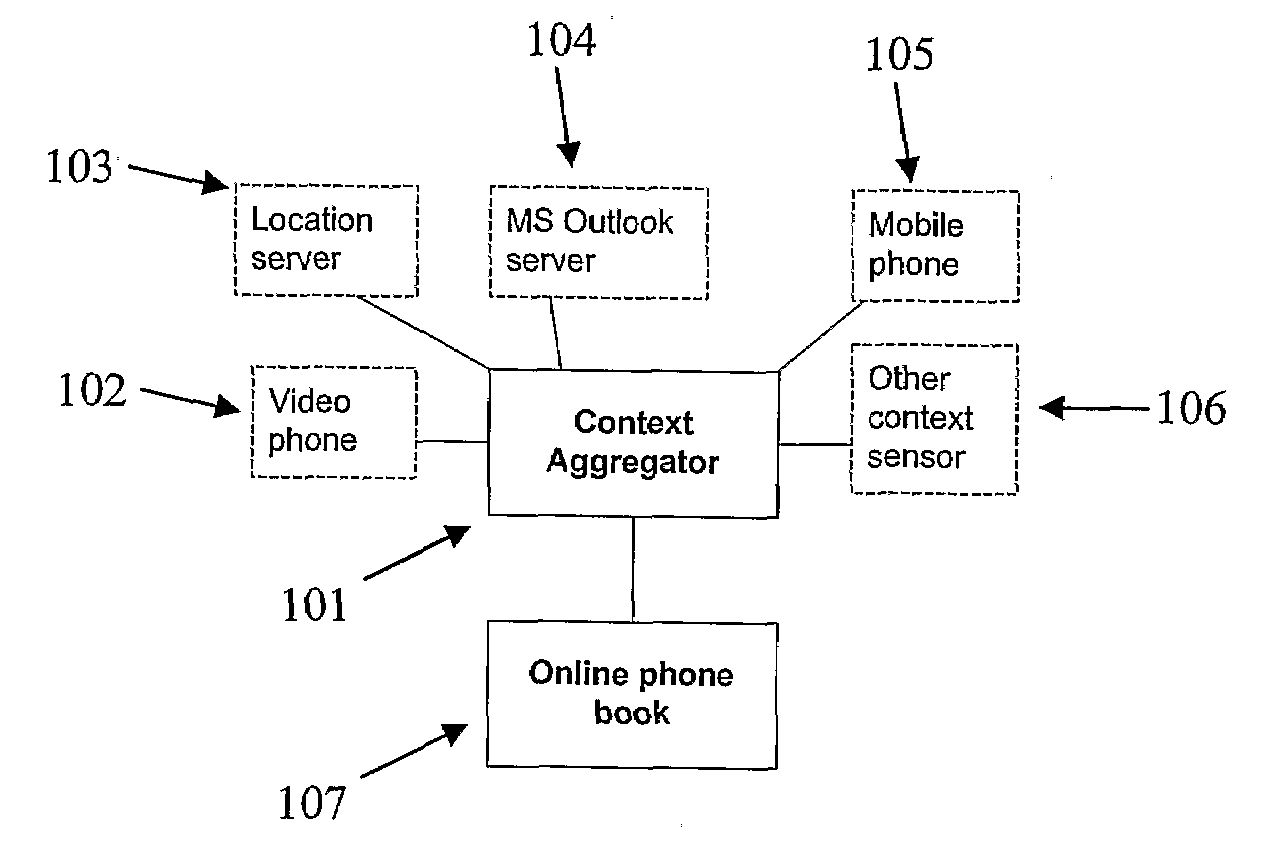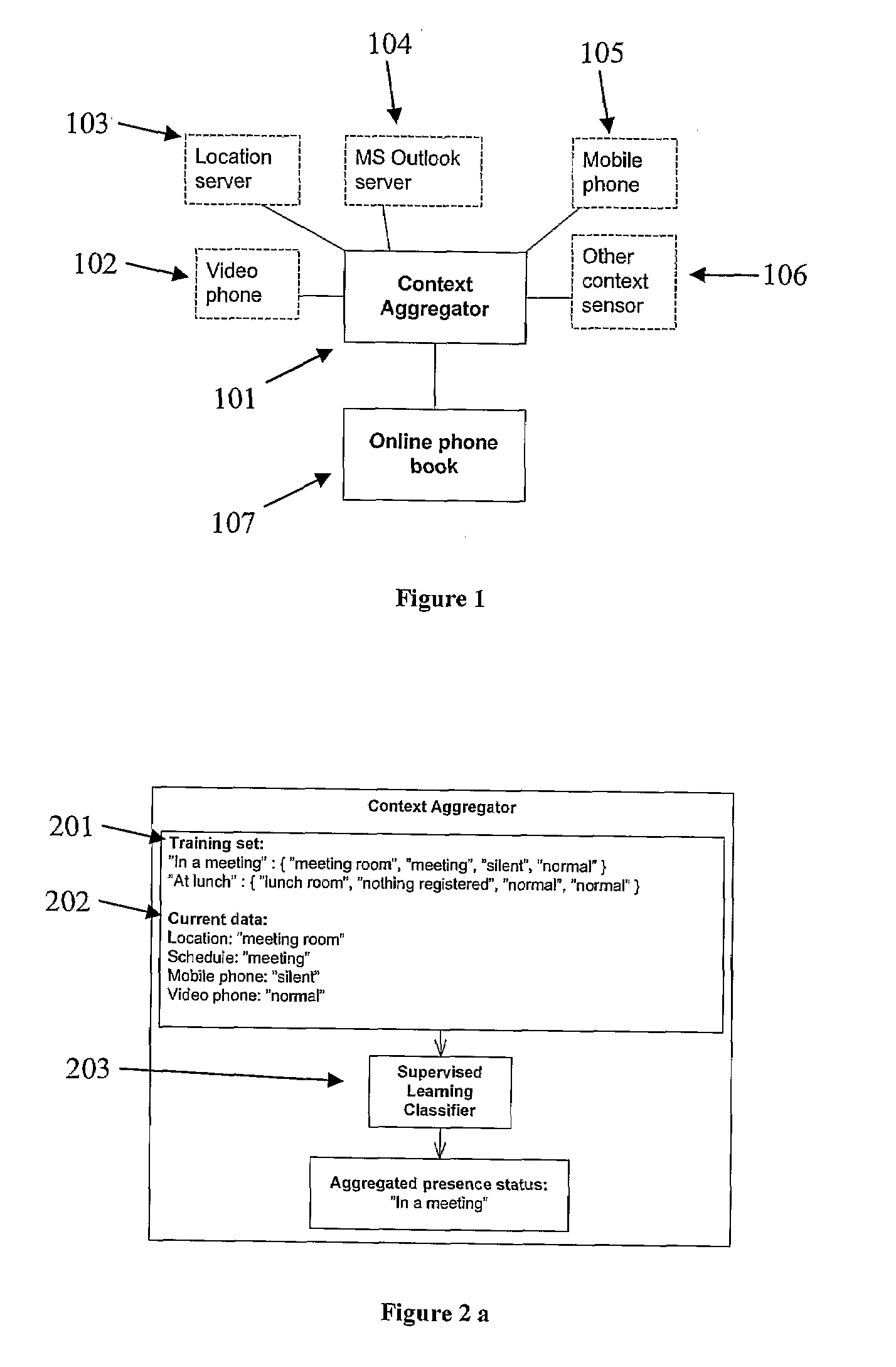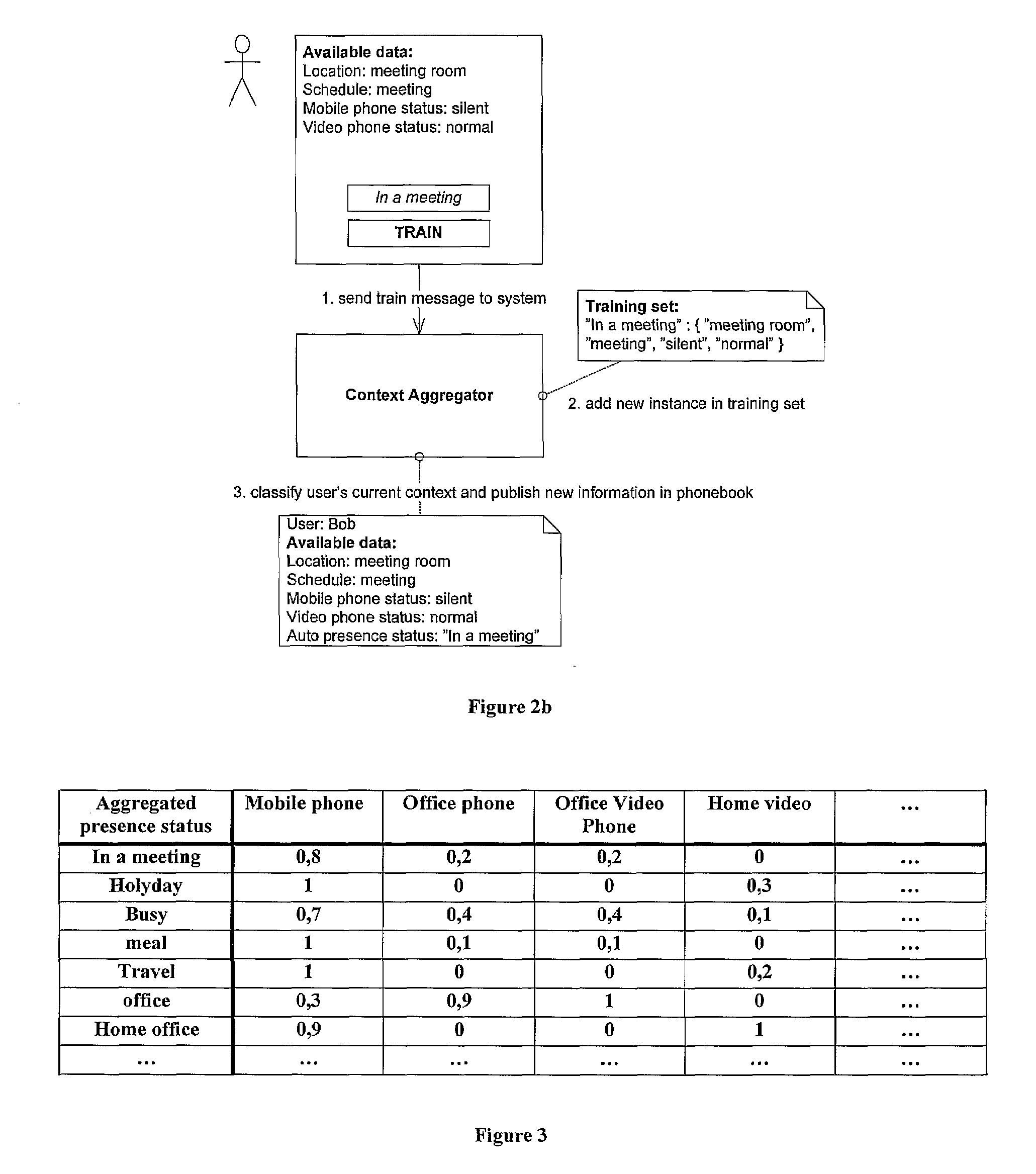Context aware phonebook
a phonebook and text technology, applied in the field of text aware phonebooks, can solve the problems of inconvenient or failed communication, not available on any office phone, and consuming a lot of tim
- Summary
- Abstract
- Description
- Claims
- Application Information
AI Technical Summary
Benefits of technology
Problems solved by technology
Method used
Image
Examples
Embodiment Construction
[0030]In the following, the present invention will be discussed by describing a preferred embodiment, and by referring to the accompanying drawings. However, people skilled in the art will realize other applications and modifications within the scope of the invention as defined in the enclosed independent claims.
[0031]The disclosed invention describes a context-aware contact manager (CACM) which decided what aggregated presence status a user should be associated with based on feedback from context sensors. The invention examines a user's context information and from this decide on a given automatic presence status which will be published in alongside other information in an online phone book. This presence status is useful as it allows for a person to decide whether it is appropriate to initiate communication or not. This is accomplished through the user context aggregator which is personal for each user. The user context aggregator contains a supervised learning algorithm which lea...
PUM
 Login to View More
Login to View More Abstract
Description
Claims
Application Information
 Login to View More
Login to View More - R&D
- Intellectual Property
- Life Sciences
- Materials
- Tech Scout
- Unparalleled Data Quality
- Higher Quality Content
- 60% Fewer Hallucinations
Browse by: Latest US Patents, China's latest patents, Technical Efficacy Thesaurus, Application Domain, Technology Topic, Popular Technical Reports.
© 2025 PatSnap. All rights reserved.Legal|Privacy policy|Modern Slavery Act Transparency Statement|Sitemap|About US| Contact US: help@patsnap.com



